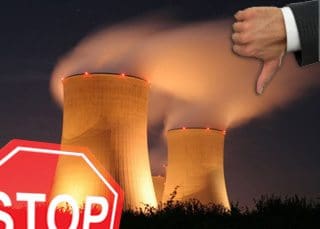
Although for decades the arguments against nuclear power have been –and still are- strong and valid, there is an increasing group of nuclear companies supported by scientists and politicians, who say we need nuclear power to fight climate change and to be independent. They also claim that all the problems associated with nuclear power are almost solved or solved.
Why do they say this? Because for them, nuclear power means profits, power and politics.
Nuclear power produces nuclear waste that is highly radioactive. What exactly is radioactivity and what is radiation? What radiation can do to living organisms was clearly illustrated when the Russian former KGB spy Alexander Litvinenko was poisoned with a tiny dose of polonium-210. It killed him in a few days. Nuclear radiation occurs when unstable atoms decay.
It disrupts the functioning of the cells that make up our bodies. High levels of radiation kill cells, resulting in radiation burns, sickness and death.
[pullquote_right]Lower levels of radiation cause mutations, which can result in cancer and inheritable genetic damage. These effects are unpredictable.[/pullquote_right]
Like with smoking, we know there is a direct relation but it occurs at random. If a large number of people are exposed to radiation, for example as happened after the Chernobyl accident, we know that some people will get cancer and some women will give birth to children with genetic defects, but we cannot predict who will be affected. Also the effects can be delayed, with cancers or birth defects occurring many years after exposure to radiation.
High levels of radiation are very dangerous. The nuclear industry believes that high-level waste can be stored relatively harmlessly. Most other sources claim that the waste is still radioactive (far above free release limits) after 240,000 years.
The nuclear industry proposes long-term waste storage sites e.g. in bunkers or in deep rock formations, but has failed to realise such a long-term disposal site. It is impossible to guarantee the isolation of waste for hundreds of thousands of years. Once the waste is buried, there is no longer a possibility to check for and repair leakages. Leakages are simply a matter of time, i.e. the containers definitely will leak sometime in the future, releasing the radioactivity they contain.
Aboveground storage cannot be considered safe either. Although there is a possibility to control and repair the waste containers, mankind will be responsible for its management ‘forever’. Containers have to be replaced and the storage facility must be protected against war, terrorism and other potential dangers.

A study published in January 2007 in Nature casts new doubt on nuclear waste storage safety. Synthetic material that scientists had hoped would contain nuclear waste for thousands of years may not be as safe and durable as previously thought. It showed that this material (zircon) is susceptible to degradation faster than expected and may not be able to contain the waste until it becomes safe. The findings are particularly important for long-lived isotopes such as plutonium, uranium and neptunium.
The following case shows some of the problems related to underground storage. The true but unbelievable storage of the Asse salt mine started when until 1978, 124,000 barrels of low and intermediate radioactive waste (including 24 kg of plutonium) were stored in a former salt mine in Asse, Lower Saxony, Germany. The waste was supposed to be stored ‘forever’ in dry salt.
Recent research showed that since 1988, salt lye water has been flowing freely into the mineshaft daily (11.5 m3 per day in November 2006), causing the waste drums to rust. In total, 52 million litres have entered over 18 years. The former salt mine consists of open spaces (for transport and storage), and is now subsiding, with risk of collapse. An October 2006 survey showed that the combination of rust and radioactive waste could produce inflammable or explosive gases, which build up pressure, pushing up radioactive material, possibly into the groundwater system. In reaction to the first signs of leakages, the German government started to stabilise the mine in 1995 by filling it with 2.5 million m3 of salt (in 15 years).
According to the Ministry of Science & Technology these costs amount to several hundreds of millions of Euros to be paid by the government.
Clean Energy?
Nuclear energy is claimed to be the answer to our climate problems since it is clean-burning. However, a life-cycle analysis, which takes into account the energy-intensive processes of mining and enriching the uranium ore, constructing and dismantling the nuclear plant, and disposing the hazardous waste, shows that nuclear is definitely not carbon-free. In fact, emissions from a nuclear plant in the U.S. can range from 16-55 grams of CO2 per kilowatt-hour over the lifetime of the plant.
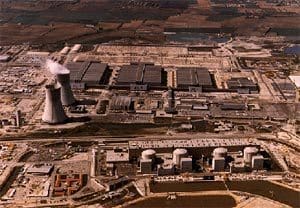
Compared to wind (11-37 gCO2/kWh) and biomass (29-62gCO2/kWh)12, nuclear is no cleaner than renewables. Furthermore, nuclear power will only become more polluting in the future since increased nuclear production will decrease the supply of high-grade uranium and much more energy is required to enrich uranium at lower grades.
At the same time, the International Atomic Energy Agency has already acknowledged that current uranium resources are not sufficient to meet increased demand in the future.
A report from The Oxford Research Group predicts that in 45 to 70 years, nuclear energy will emit more carbon dioxide than gas-fired electricity.
Running Out of Time
Nuclear power plants are a slow technology that cannot address global warming in a quick enough time period. The nature of climate change demands that we begin reducing greenhouse gas emissions now and continue doing so over the next few decades. NASA scientist James Hansen says that we have a 10-year window before global warming reaches its tipping point and major ecological and societal damage becomes unavoidable.16 Even if a nuclear energy project was given government approval today, it would take about 10 years for the plant to start delivering electricity.
Before that time, emissions would increase from construction, speeding up the process of global warming.
Real Solutions Are Waiting On the Shelf
 Nuclear power might be a reasonable option to solving climate change if it were the only alternative to coal and natural gas. Fortunately, cleaner, cheaper, quicker solutions to global warming are already available. We can also take advantage of huge potential energy savings through efficiency. That doesn’t mean being forced to do without; it simply means going further with each kilowatt of electricity.
Nuclear power might be a reasonable option to solving climate change if it were the only alternative to coal and natural gas. Fortunately, cleaner, cheaper, quicker solutions to global warming are already available. We can also take advantage of huge potential energy savings through efficiency. That doesn’t mean being forced to do without; it simply means going further with each kilowatt of electricity.
Energy efficiency is not only the cheapest and easiest way to reduce our carbon dioxide emissions; it will actually save consumers money. A report from the McKinsey Global Institute stated that the installation of highly efficient light bulbs and appliances nation-wide could displace the equivalent output of more than 60 large nuclear plants.
The primary argument made for the necessity of increased energy consumption is to fuel economic growth. However, we can still achieve much economic growth without building a new power plant except to replace ones that retire. In fact, since 1990, about half of our increased energy demand worldwide has been met with increased efficiency, not new generation.
The promise of renewable energy options continues to improve as well; modern-day wind turbines are already less expensive than nuclear power and, as the technology continues to improve, costs are dropping even lower.




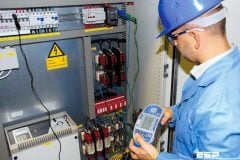
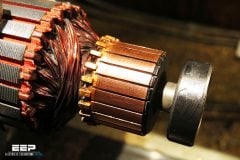

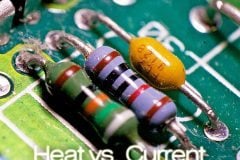
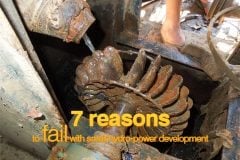


Nuclear energy employs many electrical engineers. In this time where we have 10% unemployment, I doubt a legitimate site for electrical engineers would pose such a position.
Atoms4Peace1, this article is about really dirty background and environment impact of nuclear energy. Of course that nuclear energy is about to be used for good cause, and that whole nuclear industry employs thousands of engineers, but I’m afraid that humanity will not stop using it other causes, if you know what I mean.
Edvard, clearly you have a bias against nuclear energy. This means you wrote this article and performed your research only to back up your bias. The environmental impact and safety risk of nuclear energy is negligible compared to coal and oil. Renewable energy is sporadic and unreliable as a primary source of energy.
Hopefully, after recent Fukushima accidents that still spread danger around, I think that people are awaking. We all know that future of energy sources belong to renewable clean energy.